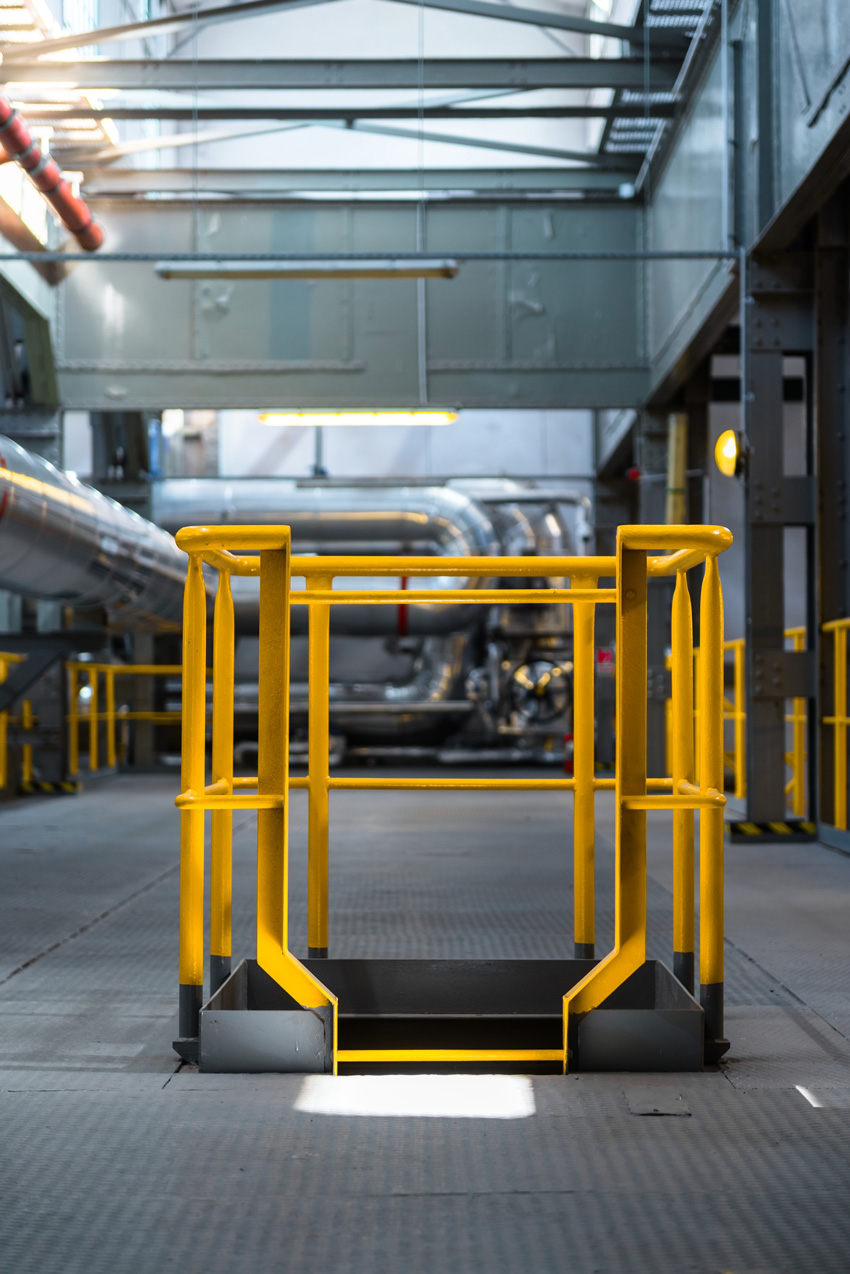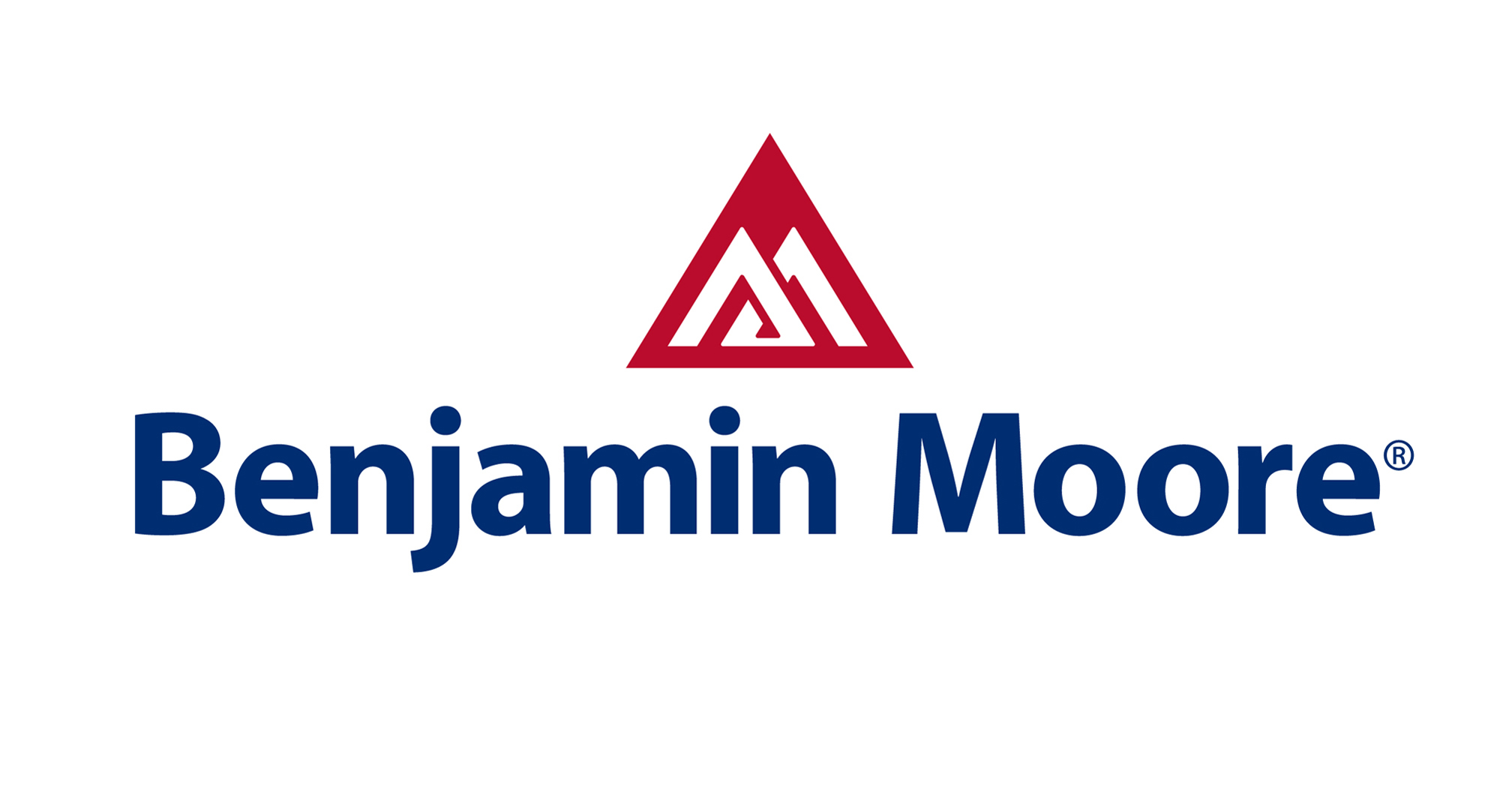This CE Center article is no longer eligible for receiving credits.
While architects, interior designers, and building professionals are accustomed to using traditional, acrylic architectural paints, most are less familiar with high-performance coatings. Yet, in certain situations, these coatings are exactly what is needed for a project. The catch is that the world of high-performance coatings requires specific knowledge; professionals in this field go through extensive training to learn how to specify these products. Not surprisingly, professionals not in this particular field often find themselves unsure where to start when considering these products. This course is an entry point to the world of high-performance coatings by introducing these coatings and exploring why, when, and where they are used. Once building professionals have the foundation they need to work confidently with coating specialists, they can begin to take advantage of products that outperform architectural paints in just about every way.

Specifying the correct coating can help ensure durability, longevity, and reduced maintenance costs over the life of the project.
The chances are good that through the course of a day, most people come into contact with several high-performance coating systems without thinking about what the material is or why it is important. Anyone who has walked over painted metal grates on the street, crossed a bridge, taken their kids to a playground, boarded a subway car or bus, entered a school or health-care facility, had a meal at a restaurant, passed a shipping container or dumpster, or attended a sporting event at an arena has likely encountered some type of high-performance coating.
While larger industrial structures such as power plants, oil rigs and pipelines, and other facilities may come to mind when discussing high-performance coatings, they are by no means the only places these coatings are used. As the general list above suggests, these coatings are used on many common structures and surfaces, and they are so ubiquitous that most people do not even notice them, let alone think about what they are or how they are used.
High-Performance Coatings: The Big Picture
Let’s start with the big picture of where high-performance coatings are used and what they are designed to do. In the most basic sense, these coatings are designed for protection, performance, and aesthetics. That is, they protect capital investments by maintaining the integrity of the surface and structure for safety purposes. High-performance coatings are used to extend the surface life of the structure and increase the time until the structure needs to be recoated. For example, a steel bridge in a major urban center that has nonstop daily traffic needs to be as safe as possible for as long as possible, and a high-performance coating system can help by resisting corrosion and adding durability. The coating also addresses an aesthetic need, whether that is to make a bold statement with color or to provide a muted color that blends in with the surroundings. Either way, the coating adds color and durability to the structure, depending on the project.

High-performance coatings can be part of an overall strategy to ensure caustic or dangerous chemicals remain secured.
High-performance coatings are typically used in environments where structures and surfaces require enhanced abrasion and chemical resistance and require added durability. They are designed to meet the requirements of their primary function, which is to protect the surface that they are coating. In some cases, the coatings may protect surfaces from excessive use and abuse—for example, flooring in an automotive shop garage or on the steps, railings, and in hallways of a large sports arena. In other cases, they may protect surfaces from corrosion caused by simple exposure to the elements or aggressive environments that may include corrosive chemicals. Regardless of the case, high-performance coatings enhance the overall durability of whatever they coat. This added protection is provided to ensure the safety of not only the people who come into contact with the structures but also the immediate physical environment surrounding the structures.
As a paint product, high-performance coatings also have a secondary function, which is to enhance the aesthetics of a structure or space. Coatings may be used in many different ways: to downplay a space (e.g., a neutral tan or grey), to highlight a key feature (e.g., a bright red or yellow fire hydrant or holding tanks colored to indicate different contents), or to beautify or brand a space (e.g., high school lockers, or a transit system bus or subway car). Whatever the case, high-performance coatings are everywhere—all it takes is learning to see them and understand why they are there.

Concrete, cement, and brick masonry are vulnerable to chipping and cracking. However, when they are properly primed and coated, they become better protected from a potentially damaging environment.
While architects, interior designers, and building professionals are accustomed to using traditional, acrylic architectural paints, most are less familiar with high-performance coatings. Yet, in certain situations, these coatings are exactly what is needed for a project. The catch is that the world of high-performance coatings requires specific knowledge; professionals in this field go through extensive training to learn how to specify these products. Not surprisingly, professionals not in this particular field often find themselves unsure where to start when considering these products. This course is an entry point to the world of high-performance coatings by introducing these coatings and exploring why, when, and where they are used. Once building professionals have the foundation they need to work confidently with coating specialists, they can begin to take advantage of products that outperform architectural paints in just about every way.

Specifying the correct coating can help ensure durability, longevity, and reduced maintenance costs over the life of the project.
The chances are good that through the course of a day, most people come into contact with several high-performance coating systems without thinking about what the material is or why it is important. Anyone who has walked over painted metal grates on the street, crossed a bridge, taken their kids to a playground, boarded a subway car or bus, entered a school or health-care facility, had a meal at a restaurant, passed a shipping container or dumpster, or attended a sporting event at an arena has likely encountered some type of high-performance coating.
While larger industrial structures such as power plants, oil rigs and pipelines, and other facilities may come to mind when discussing high-performance coatings, they are by no means the only places these coatings are used. As the general list above suggests, these coatings are used on many common structures and surfaces, and they are so ubiquitous that most people do not even notice them, let alone think about what they are or how they are used.
High-Performance Coatings: The Big Picture
Let’s start with the big picture of where high-performance coatings are used and what they are designed to do. In the most basic sense, these coatings are designed for protection, performance, and aesthetics. That is, they protect capital investments by maintaining the integrity of the surface and structure for safety purposes. High-performance coatings are used to extend the surface life of the structure and increase the time until the structure needs to be recoated. For example, a steel bridge in a major urban center that has nonstop daily traffic needs to be as safe as possible for as long as possible, and a high-performance coating system can help by resisting corrosion and adding durability. The coating also addresses an aesthetic need, whether that is to make a bold statement with color or to provide a muted color that blends in with the surroundings. Either way, the coating adds color and durability to the structure, depending on the project.

High-performance coatings can be part of an overall strategy to ensure caustic or dangerous chemicals remain secured.
High-performance coatings are typically used in environments where structures and surfaces require enhanced abrasion and chemical resistance and require added durability. They are designed to meet the requirements of their primary function, which is to protect the surface that they are coating. In some cases, the coatings may protect surfaces from excessive use and abuse—for example, flooring in an automotive shop garage or on the steps, railings, and in hallways of a large sports arena. In other cases, they may protect surfaces from corrosion caused by simple exposure to the elements or aggressive environments that may include corrosive chemicals. Regardless of the case, high-performance coatings enhance the overall durability of whatever they coat. This added protection is provided to ensure the safety of not only the people who come into contact with the structures but also the immediate physical environment surrounding the structures.
As a paint product, high-performance coatings also have a secondary function, which is to enhance the aesthetics of a structure or space. Coatings may be used in many different ways: to downplay a space (e.g., a neutral tan or grey), to highlight a key feature (e.g., a bright red or yellow fire hydrant or holding tanks colored to indicate different contents), or to beautify or brand a space (e.g., high school lockers, or a transit system bus or subway car). Whatever the case, high-performance coatings are everywhere—all it takes is learning to see them and understand why they are there.

Concrete, cement, and brick masonry are vulnerable to chipping and cracking. However, when they are properly primed and coated, they become better protected from a potentially damaging environment.
Why, Where, and How High-Performance Coatings Are Used
In the previous section, we established the basics about high-performance coatings, but let’s dig deeper into why, where, and how these coatings are used.
Why are High-Performance Coatings Used?
High-performance coatings serve three primary purposes: protection, performance, and aesthetics. Protection, for example, can refer to the coating’s ability to protect the substrate from the elements, such as moisture, dirt and dust, and sun exposure. It also can refer to protecting the substrate against chemical exposure and abrasion. That protection, in turn, ensures that the substrate underneath remains as durable and safe as possible, whether that material is metal, masonry, concrete, or drywall.
Construction materials are used to meet specific needs, and each has different limitations. Steel, for example, is one of the most commonly used materials in construction projects, and it is critical that it resists corrosion. High-performance coatings protect steel and other metals by creating a highly durable barrier between the metal and its service environment. Architectural paints cannot provide that level of protection or performance. Concrete, cement, and brick masonry are also vulnerable to chipping and cracking. However, when they are properly primed and coated, they become better protected from a potentially damaging environment. Drywall, which is commonly used in many architectural projects, is limited in that it easily can be damaged by impact if painted with a standard architectural coating. A high-performance coating, on the other hand, can add a level of durability from light scuffing that is quick and easy to clean while simultaneously adding a pop of color to the surface.
Where are High-Performance Coatings Used?
An easy way to think about where high-performance coatings might be useful is to go back to the answers to the “why questions” above. That is, these coatings are used on surfaces that require exceptional durability against abrasion and physical use, or protection from corrosion or chemicals. At first glance, structures such as bridges and industrial sites come to mind, and they are indeed one of the main places where high-performance coatings are necessary. Some out-of-the-box thinking, however, can reframe the need for exceptional durability to see that high-performance coating systems are not limited to industrial and mechanical purposes. In fact, there are many nonindustrial projects where high-performance coatings are preferable over architectural coatings, including hotels, retail, and commercial spaces to educational and health-care facilities—the opportunities are endless.
Let’s step outside of the large-scale, industrial-only box and look at a few examples of where these coatings can make a drastic difference in the longevity of structures and surfaces, and where they can improve the spaces and structures.
A common view is that high-performance coatings are limited to projects such as offshore oil platforms or other large-scale industrial structures that are subject to harsh environmental conditions. Oil platforms, for example, do face extreme environments with constant exposure to moisture, salt spray, and high winds, and a high-performance coating is critical to reducing the rate of corrosion. But such environmental conditions are not unique to the middle of the ocean. Commonplace structures such as the metal cooling towers that are on top of almost every mid- to high-rise building in a city, for example, are subjected to UV rays, rain, snow, wind, and other weather challenges. These towers also have water running through them at all times so they are subject to interior and exterior corrosion. There are hundreds, if not thousands of these water towers in any given urban area, and every single tower needs a high-performance coating. All it takes is to look around to see metal and concrete structures that can benefit from the protective characteristics of a high-performance coating system.
Other projects, typically considered architectural, such as hospitals, healthcare facilities, restaurants, retailers, and hotels or, for that matter, any place that gets a lot of use and needs to be kept clean and safe, is a candidate for high-performance coatings. Most of these spaces include kitchen areas that need to be spotless for health and safety codes and retail spaces that need to ensure floors and walls are kept clean and presentable. The primary purpose of high-performance coating systems is protection—creating surfaces that are not easily destroyed by harsh cleansers or during decontamination processes in facilities like hospitals, restaurants, and nuclear plants that have to be cleaned regularly with harsh chemicals.
Sporting arenas or ballparks are yet another example where high-performance coating systems can be applied. Picture a ballpark, with tens of thousands of feet of metal railings that need to be painted for aesthetic appeal, to protect the metal, and to protect the patrons. Chipped paint or rust flakes can be injury hazards, and so these railings require a durable and long-lasting coating that will help ensure that the facility is a safe place. And, with thousands of feet of railings, the facility will benefit from using a product that is easy to apply and quick to dry. Another use for high-performance coatings may be on flooring in arenas and parks; a durable, nonslip coating can help reduce foot-traffic accidents, especially in venues where food and beverages are sold (and often spilled) or that have outdoor seating exposed to harsh weather.
The examples above include areas that get frequent daily use from people; however, there are also spaces that are exposed to the wear and tear of construction equipment and heavy machinery, such as warehouses. Such spaces can benefit from high-performance coatings on everything from floors that are subjected to the metal of a scraping forklift or abrasion from the lift tires to oil, fuel, and material spills. Warehouses also have internal supports such as poles and walls that may get bumped or scraped from incoming trucks or other small industrial vehicles. All of these spaces can benefit from a high-performance coating system.
Spaces such as building maintenance and facilities rooms also contain structures that require high-performance coatings. Although the structures vary from building to building, they all include tanks and pipes that need to be color-coded with a durable chemical and corrosion-resistant paint. Color coding makes it easy to differentiate the pipes, and a high-performance coating simultaneously contributes to protecting whatever is contained in the pipe or tank from the exposure to the elements, while also assisting in protecting the environment from whatever is contained in the pipes.
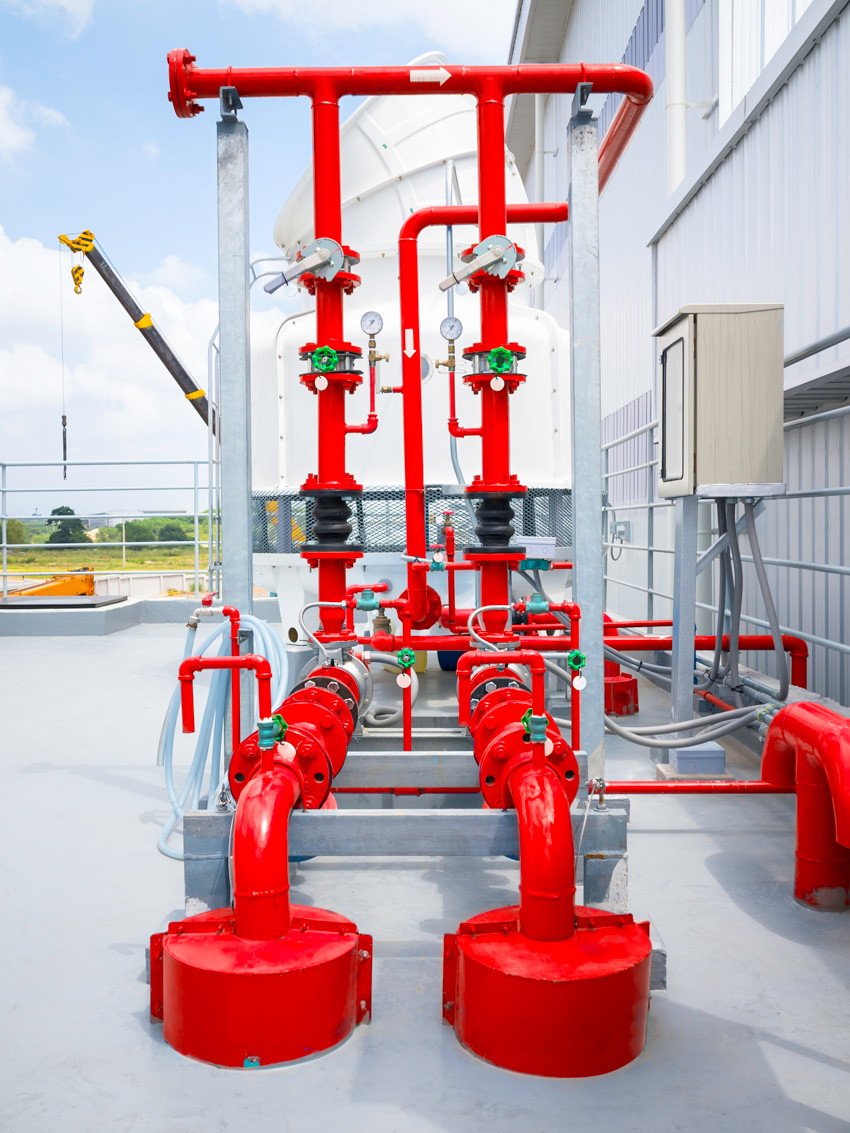
Color coding makes it easy to differentiate the pipes, and a high-performance coating simultaneously contributes to protecting whatever is contained in the pipe or tank.
What Is a High-Performance Coating System?
High-performance coatings typically rely on a multilayered approach, although there can be some variation depending on the substrate and project. After proper and complete preparation, the basic steps include a primer, an intermediate coat, and a finish coat. Primers are designed to adhere to the surface and provide additional corrosion resistance. Different substrate materials and conditions require different primers. In some situations, it may be used to drive out moisture from the substrate and to help inhibit rust and corrosion in a metal structure or pipes. The coating system, regardless of the intended use or service environment, needs to be applied to a properly prepared substrate. Surface preparation should be the best allowable under project conditions and be appropriate for the coating system being applied.
Even with a primer, most substrates need more than just one additional coat of paint and so require an intermediate layer. There are two main reasons why this second layer is necessary. First is that paint is measured in “mils,” which are 1/1000 of an inch. A typical coat of paint yields about 1 mil to 3 mils per coat, which is a very thin layer that does not offer much protection; an added layer makes a big difference. Second, all applied coatings may have pinholes, which are pathways for water and chemicals. Additional coating layers reduce the possibility that the pinholes in subsequent layers line up, thus potentially eliminating these paths to the substrate for water or chemicals.
The top coat—or finish coat—provides additional protection but also is used for aesthetics. Coating aesthetics can range from color-coded pipes in an industrial or maintenance facility to sports teams’ colors throughout an arena or a school’s colors on the hallway walls, gymnasium, or cafeteria. The top coat also may be used to finish the surface with a high gloss that is easier to clean and potentially more abrasion resistant than lower sheen coatings.
In general, most residential and commercial projects require a coating system that includes one coat of primer and two additional top coats. Industrial applications, however, may require specialized primer followed by a specific intermediate coat and then a top coat. Regardless of the application, the logic behind this three-coat layering system is the same: to maximize protection and performance of the coating and to extend the longevity of the substrate. The layers work together to protect the substrate—it’s not always about thickness; it’s about the layering.

Multi-coating, or laying, works to maximize protection and performance of the coating and to extend the longevity of the substrate. The layers work together.
A final note about layering: Coating manufacturers formulate their products to work together to ensure optimal performance, so it is important to specify a coating system from a single manufacturer and not mix and match.
When it comes to thinking about how to use high-performance coatings for a project, there are two approaches to consider: bottom up and top down. The bottom-up approach starts with the substrate and works upward to the coating by considering the type of preparation and coating requirements for the substrate. The top-down approach, on the other hand, starts with the coating goal (e.g., aesthetics or performance) and works down to the substrate, considering what issues the substrate may encounter in the space (e.g., moisture, salt, chemicals). Both approaches are equally important and should be used together to get the full picture of what the physical, performance, and aesthetic requirements are for the substrate and thus for the coating.
High-Performance Finish Coats
Earlier we talked about the importance of the layering system with high-performance coatings. Each layer has a specific purpose, but the finish coat—also known as the top coat—addresses not only performance and protection but also aesthetics. As the visible layer, this coat has a role in the overall look of the finished project, but it also works as a first line of defense against the elements, abrasion, chemicals, and other factors. If we think about this from the top-down approach, finish coat selection will need to address aesthetic and performance goals, and it will need to be able to handle the environmental conditions of exposure, whether indoor or outdoor.
Pre-Catalyzed Waterborne Wall Epoxy (One-Component Product)
This finish is designed specifically for interior walls—including drywall. The epoxy resin is incorporated into the coating during the manufacturing process and, contains low levels of volatile organic compounds (VOCs), and cleans with water. As a finish, this epoxy is easy to apply and is very durable. The quick and easy cleaning characteristics make this finish an excellent choice for retail and commercial properties, as well as health-care facilities and schools. Walls in the hallways, gyms, locker rooms, and cafeterias are all subject to frequent abuse that require a durable finish that can withstand repeated scrubbing. In addition to performance, this coating is available in a wide range of colors and sheens to meet the aesthetic needs of a property.
Waterborne Amine Epoxy (Two-Component Product)
Another epoxy option is a waterborne amine epoxy. The finish has characteristics of resisting chemicals, abrasions, and impacts, and it can be used on substrates ranging from steel, iron, and concrete to nonferrous materials, wood, and drywall. As a water-based epoxy, it has lower odor than solvent-based epoxies, which means it can be applied in occupied spaces. The finish is easy to apply, rugged, and durable. Typical uses include concrete floors that get a lot of foot traffic, such as in a garage, arena, basement, warehouse, or in high-traffic commercial areas. Such sites need the flooring to be durable and safe, and the finish needs to adhere extremely well to the substrate. This finish is part of a specific system that requires careful preparation of the substrate followed by a primer and then the finish coat. While aesthetics are not the primary goal of this finish, flakes can be applied to enhance the visual appeal while working to hide dirt and grime.
Alkyd Urethane Enamel (One-Component Product)
Enamel finishes provide both rugged durability and a smooth, glossy appearance, and they make a good maintenance coating. In addition to durability and gloss, an alkyd urethane enamel has the key characteristics of excellent surface tolerance so they work well with surfaces that are less than perfect. They also cure to a hard, scratch-, and impact-resistant finish. From a practical standpoint, enamel finishes are easy to apply with spray, brush, or roller. However, traditional alkyd enamels, while maintaining some popularity because of their application and adhesion properties, are declining in use because of VOC restrictions and use of solvents.
Typical uses for this enamel finish include exterior spaces such as fences, outdoor equipment, or anything that needs to stand up to a lot of wear and tear and abuse, although the finish may chalk and fade over time from UV exposure and harsh weather conditions. An example of applications where this finish might be used are parks, amphitheaters, and amusements parks—spaces that demand performance and require bright, glossy color for aesthetic appeal.
Acrylic Direct-to-Metal (DTM) Enamel (One-Component Product)
Another enamel finish option is an acrylic direct-to-metal finish. This type of finish is best for light-to-moderate industrial and commercial use, but it also works well in select residential situations where metal surfaces need to be coated quickly, such as exterior doors or railings in an apartment complex. DTM enamel is corrosion, UV, and moisture resistant. While designed for metal, this coating also can be used to provide a smooth, durable finish on a variety of substrates, including wood, drywall, and masonry. A direct-to-metal enamel finish is particularly useful for structures that get a lot of physical abuse and that may need to be repainted occasionally. For example: ballparks, event arenas, and factories include railings that need to be kept strong and safe, and a finish that can be applied on a variety of surfaces, dries quickly, and adheres well is ideal.
Aliphatic Acrylic Urethane (Two-Component Product)
As a finish option, an aliphatic acrylic urethane offers high-end performance and color retention for exterior surfaces that are exposed to rain and sunlight. This finish may be used as the top layer on masonry or metals, and it requires subcoats of primer and epoxy. Its characteristics include resistance to UV rays, chemicals, abrasion, and hydraulic fluids—all of which make it an excellent coating for industrial applications. This coating is ideal for situations that require long-lasting surfaces with minimal maintenance; for example, the exterior of a large industrial tank or as a finish coat on a high-performance floor system. In addition to resisting scratches, abrasion, and impacts, the coating’s durability and gloss also help it resist graffiti while improving the longevity of the substrate.
Environmental and Operations Conditions That Influence Coating Performance and Service Life
Regardless of whether a high-performance coating system is used for an architectural or industrial project, the coating will be exposed to varying environmental and operations conditions. These conditions can be anything from the day-to-day activity in a hot restaurant kitchen with splatters and spills and constant cleanup to grease and chemical stains in a garage or industrial setting. Regardless of the situation, these conditions will influence how well and how long the coating will perform.
Environmental Conditions
Environmental conditions apply to both interior and exterior spaces. Many interior spaces have challenging indoor environments that can influence how well a coating performs. For example, schools can have spaces such as swimming pools and gymnasiums where humidity levels are high, kitchens can get very hot, and factories may be exposed to harsh environments with particulate matter within the space. Exterior spaces experience more varied environmental conditions, and structures in some climates are subjected to freeze-thaw conditions and salt exposure in the winter. Humidity, UV exposure, salt, particulate matter, and both substrate surface and surrounding air temperature all contribute to the localized environment that can affect a coating’s application and adhesion, performance, and service life. Each of these conditions affect different substrates in different ways.
Moisture is one of the more common issues that impacts coatings, in part because it can arise under many different conditions. The combination of the right air to surface temperatures and higher humidity can cause dew that may condense on a surface. It should come as no surprise that in a very warm, humid environment, coatings will take longer to dry—this is because warm air holds more moisture than cold air. The point is that high humidity can cause moisture vapor to condense on the substrate surface, which can result in slow curing rates, problems from aesthetic defects, rust, or performance flaws.
Moisture-related issues may be mitigated by monitoring the humidity and dew point during application and applying the product only when the surface temperature is a minimum of 5 degrees Fahrenheit above the calculated dew point.
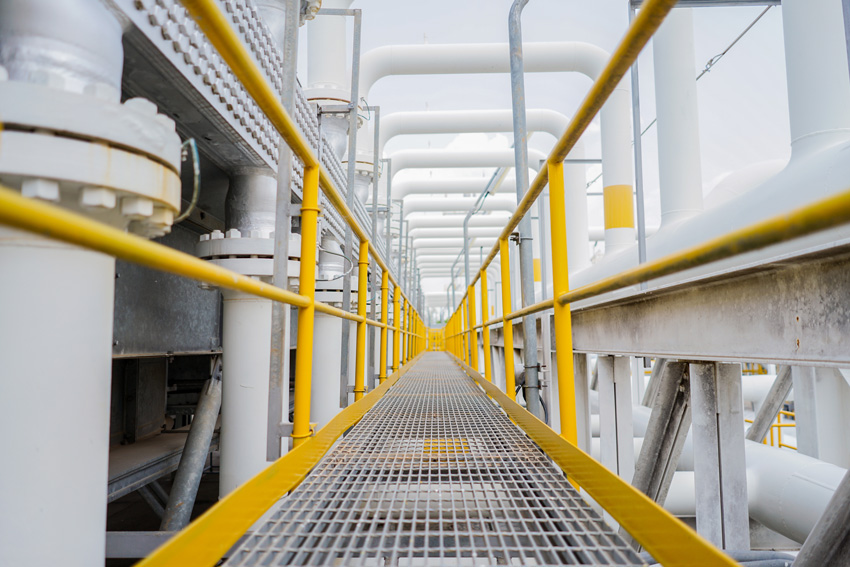
Humidity, UV exposure, salt, particulate matter, and both substrate surface and surrounding air temperature all contribute to the localized environment that can affect a coating’s application and adhesion, performance, and service life.
Other challenges can emerge such as high air flow, which can affect curing, and direct sunlight, which can affect longevity. UV exposure, in particular, can dull a coating’s color over time, and it can eventually break down the coating material. Particulate matter and salt also can compromise a successful application of the coating and impact longevity. Chlorides (salts) on a surface affect longevity because salts have an affinity for water and in extreme cases can actually draw water through the paint film.
Physical Conditions
Once a high-performance coating system is properly applied, it is inevitably exposed to the very factors it is designed to resist. In some cases, this may be chemical exposure, such as in an industrial setting or laboratory setting and in other cases, physical conditions may include abrasion, impact, and simply long-term wear and tear. That said, a high-performance coating system that is appropriately specified and correctly applied should withstand the physical conditions it was designed and tested to protect against.

A high-performance coating system that is appropriately specified and correctly applied should withstand the physical conditions it was designed and tested to protect against.
Project Requirements that can Limit Coating Options
Different project requirements can affect the coating options. Exterior projects may be affected more by environmental conditions, whereas interior projects rely on the coating to ensure a safe and healthy indoor environment during an immediately after application. Odors, VOCs, and application turnaround as well as dry times can be critical factors in interior projects, especially if the space is occupied. Projects such as hospitals, for example, must have the proper paint applied (e.g., low odor, no VOC) in order to avoid affecting patients and staff—and to ensure the facility can remain open. The same holds true for any occupied space. New construction is a different matter, especially if occupants are not an issue, but such projects may have requirements that limit what coating options are appropriate.
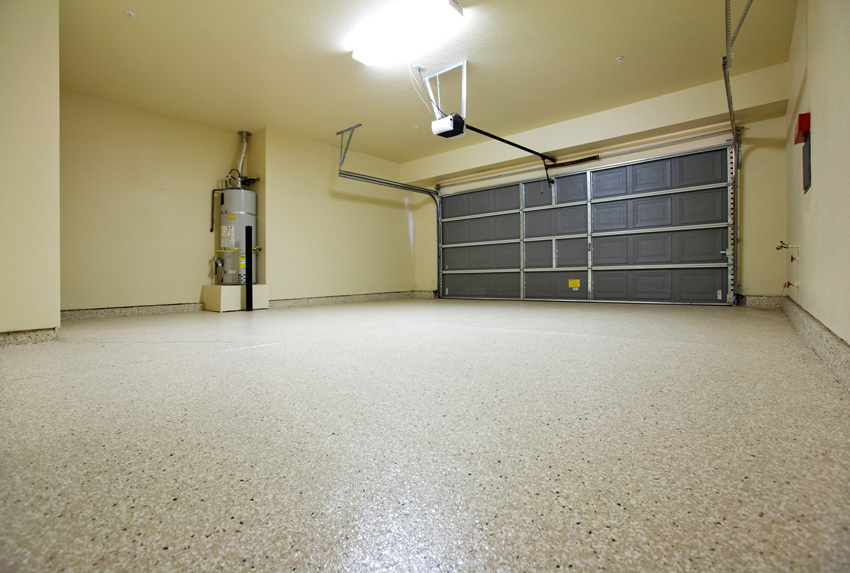
Odors, VOCs, and application turnaround as well as dry times can be critical factors in interior projects, especially if the space is occupied.
Other considerations are whether the coatings can be applied at night or weekends, when no one is likely to be affected by odors or potential VOCs. Off-hours can help if the paint has a longer drying time and needs time to cure before the surfaces are safe to touch or be around. Yet if there are limits to proper preparation—for example, not enough time to properly prepare the substrate before the coating is applied—the performance and longevity of the coating might be compromised.
Factors That Influence the Choice of High-Performance Coatings
In addition to the different types of high-performance coatings and the various conditions that can affect performance and service life, many factors can influence the choice of coatings. These factors are important in terms of understanding certain aspects of health, safety, and welfare of the site, particularly in terms of exposure. The factors presented in this section can serve as a springboard for discussions with coating experts.
Anticipated Use and Exposure
Two of the most important questions to ask at the start of a project are “What is the intended use of the space or structure?” and “What kind of exposure is expected?” For example, will the coating be used for an interior or exterior space? What level of physical use and abuse is expected? Will the coating be exposed to any chemicals in any form (dry, liquid, or vapor)? If the structure is outdoors, what weather conditions might it have to endure? These questions, as well as questions about any other potential factor, can help ensure that the correct high-performance coating system is specified to ensure optimal performance.
Owner Expectations
Building owners can also influence coating selection depending on their budget expectations and the expected longevity of the coating, desired color, and many other factors. Some owners understand that a high-performance coating is an investment that will save them time and money over the long term; a lower-performance architectural coating may cost less but will require frequent repaints. Other building owners may want to focus on the short term and wish to save costs up front. Owner expectations will vary from project to project, and the best way to ensure that the optimal coating is specified is to discuss expectations from the start. Other key stakeholders such as engineers, architects, and coating manufacturers’ reps, can provide valuable input to help make sure owners have realistic expectations.
Project Limitations
We touched on project limitations in the previous section in regard to performance and operation issues. The same issues apply when it comes to specifying coatings, and it is important that all limitations be reviewed prior to deciding on a high-performance coating system. Factors such as whether odor or VOCs will be a concern during preparation and application—and whether either will linger during and after the coating cures—all can impact whether a particular coating is appropriate for a space. In some cases, a coating may meet the environmental and physical performance requirements, but some aspect of a project may limit what can be used. In short, project limitations may require some tradeoffs on coating selection.
Conclusion
As we have noted throughout this course, the world of high-performance coating systems is complex. A good starting point for entering this world is to recognize that the same benefits high-performance coatings provide for large-scale industrial projects can be applied in more localized commercial projects and industrial sites. High-performance coating systems are designed to protect substrates, improve performance, and enhance project aesthetics, all of which make them an excellent coating choice anywhere durability, safety, and longevity are important. Projects can include everything from cooling towers on the tops of buildings, warehouse and parking garage walls and floors, chemical tanks and pipes in building maintenance and operational facilities—the possibilities are endless.
Given the vast range of applications and the different requirements that surfaces and service environments have for preparation, priming, and applications, it’s good to remember that there are not only well-defined standards in place but also specialists from product manufacturers who can help building professionals navigate this world. Selecting a high-performance coating system can be a complicated task, but done with the proper guidance, it can result in safer, more durable structures and surfaces that are capable of resisting the wear and tear of everything from construction machinery and corrosion to chemical spills and foot traffic.
Andrew A. Hunt, vice president of Confluence Communications, has 16 years of experience in green building and has produced more than 100 educational and technical publications. confluencec.com
 |
Benjamin Moore & Co., a Berkshire Hathaway company, was founded in 1883. One of North America’s leading manufacturers of premium-quality residential, commercial, and industrial maintenance coatings, Benjamin Moore & Co. maintains a relentless commitment to innovation and sustainable manufacturing practices. The Benjamin Moore premium portfolio spans the brand’s flagship paint lines, including Aura®, Regal® Select, Natura®, and ben®. The Benjamin Moore & Co. Family of Brands includes specialty and architectural paints from Coronado®, Lenmar®, Insl-x®, and Corotech® High-Performance Coatings. Benjamin Moore & Co. products are available primarily from its more than 5,000 locally owned and operated paint and decorating retailers. www.benjaminmoore.com |









